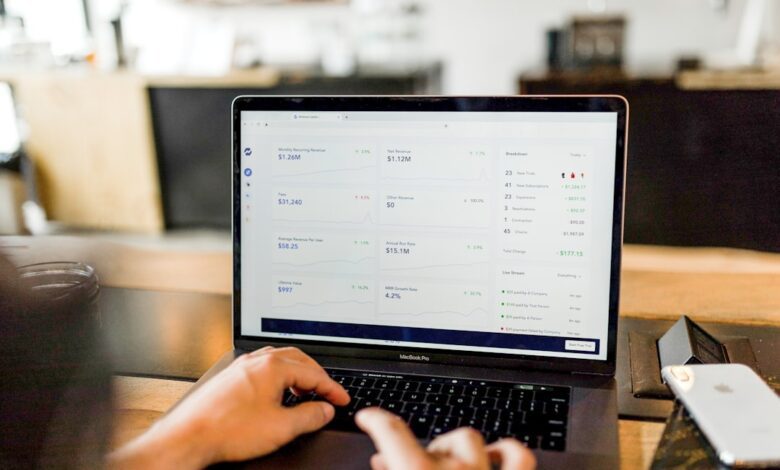Metals in Motion: Navigating Industrial Demand, Investment Trends, and Economic Signals

In today's rapidly evolving economic landscape, the role of metals extends far beyond their traditional applications, influencing both industrial practices and investment strategies. This article delves into the multifaceted nature of key metals such as silver, copper, and rare earth elements, exploring how their market dynamics reflect broader economic trends and technological advancements. As industries pivot towards sustainable practices and green technologies, the demand for specific metals is shifting, creating new opportunities and challenges for investors. We will examine how inflationary pressures impact the prices of precious and industrial metals, compare the investment potential of platinum and palladium, and highlight the importance of diversification within investment portfolios. Additionally, we will consider the future of aluminum in a sustainable economy and the significant effects of mining regulations on metal prices. Join us as we navigate the intricate relationships between these metals and their roles in shaping both industrial growth and investment landscapes.
- 1. "Silver's Dual Role: Balancing Industrial Demand and Investment Appeal"
- 2. "Copper Prices as Economic Indicators: What the Markets Reveal"
- 3. "Rare Earth Metals and Green Energy: Shaping the Future of Demand"
1. "Silver's Dual Role: Balancing Industrial Demand and Investment Appeal"
Silver's dual role in the economy is characterized by its significant presence in both industrial applications and as a coveted investment asset. On the industrial side, silver is essential in various sectors, including electronics, solar energy, and medical devices. Its high electrical conductivity and antimicrobial properties make it an invaluable component in the manufacturing of circuit boards, photovoltaic cells, and wound dressings. As industries increasingly adopt green technologies, the demand for silver is likely to rise, particularly in the renewable energy sector, where it is used in solar panels.
Simultaneously, silver's appeal as an investment vehicle remains strong. Often viewed as a safe haven asset, silver tends to attract investors during times of economic uncertainty, much like gold. Its relatively lower price compared to gold makes it accessible for a broader range of investors looking to hedge against inflation or currency fluctuations. The dynamics of silver investment are further influenced by factors such as market sentiment, geopolitical tensions, and changes in monetary policy.
The interplay between industrial demand and investment interest creates a unique dynamic for silver prices. When industrial demand surges, it can lead to increased prices, attracting more investment interest. Conversely, during periods of economic downturn, while industrial demand may decline, the investment appeal of silver can rise, bolstering prices. This dual role positions silver as a critical player in both the industrial landscape and investment portfolios, making it a versatile asset that can respond to various economic indicators and trends. As the world transitions towards more sustainable practices and technologies, understanding this balance will be crucial for investors and industry stakeholders alike.
2. "Copper Prices as Economic Indicators: What the Markets Reveal"
Copper prices have long been viewed as a barometer of global economic health, earning the nickname "Dr. Copper" due to its ability to predict economic trends. This correlation arises from copper's extensive use across various industries, including construction, electronics, and transportation. As economies grow, the demand for copper typically increases, driven by infrastructure projects and manufacturing activities. Conversely, a decline in copper prices often signals economic slowdown or reduced industrial activity.
Market dynamics reveal that copper prices are sensitive to a range of factors, including supply chain disruptions, geopolitical tensions, and changes in consumer demand. For instance, when major economies, such as China—the world's largest consumer of copper—experience growth, it often translates to higher copper prices due to increased demand for construction materials and electronic components. Conversely, during economic downturns or periods of uncertainty, such as the COVID-19 pandemic, copper prices can plummet as industries scale back production and investment.
Additionally, copper prices can serve as leading indicators of inflationary pressures. As demand outpaces supply, prices can rise, reflecting broader economic trends that may affect a variety of commodities. Investors and analysts closely monitor these price movements, using them to assess market conditions and make informed decisions about portfolio allocations.
Overall, the fluctuations in copper prices offer valuable insights into the health of the global economy, providing a tangible link between industrial activity and market sentiment. Understanding these dynamics is crucial for stakeholders ranging from investors to policymakers, as they navigate the complex landscape of economic indicators and their implications for future growth.
3. "Rare Earth Metals and Green Energy: Shaping the Future of Demand"
Rare earth metals (REMs) play a crucial role in the development and deployment of green energy technologies, significantly shaping future demand. These metals, which include elements such as neodymium, dysprosium, and terbium, are essential for manufacturing high-performance magnets used in wind turbines and electric vehicles (EVs). As the world shifts towards renewable energy sources and electric transportation to combat climate change, the demand for these metals is projected to surge.
The transition to green energy is driving innovation in battery technology, where REMs are vital components in lithium-ion batteries. The growing popularity of EVs, coupled with the increasing need for energy storage solutions, has led to a ripple effect in the market for rare earth metals. As automakers commit to electrification, the competition for these materials intensifies, further escalating their significance in the global supply chain.
Moreover, the geopolitical landscape surrounding rare earth metals adds another layer of complexity. Many of these resources are concentrated in specific regions, such as China, which dominates global production. This concentration raises concerns about supply security and sustainability, prompting countries to explore alternative sources and recycling methods to reduce dependence on single suppliers. As governments and industries invest in domestic production capabilities and sustainable mining practices, the demand dynamics for rare earth metals will continue to evolve.
In summary, the integration of rare earth metals into green energy technologies not only underscores their importance in the transition to a sustainable economy but also highlights the need for strategic planning in sourcing and utilization. As demand continues to rise, these metals will play a pivotal role in shaping future energy landscapes and investment opportunities.
In conclusion, the multifaceted roles of metals in both industrial applications and investment markets underscore their significance in today's economy. Silver's unique position as both a critical industrial component and a popular investment asset highlights the intricate balance between supply and demand. Similarly, copper prices serve as a key barometer for global economic health, reflecting broader market trends and investor sentiment. The rise of green energy technologies further amplifies the demand for rare earth metals, positioning them as essential commodities in the transition to a sustainable future.
As we compare platinum and palladium, the decision of which metal offers a better investment hinges on market dynamics, industrial usage, and economic forecasts. Additionally, the strategic incorporation of various metals into investment portfolios can provide diversification and a hedge against inflation, which continues to influence precious and industrial metal prices.
Looking ahead, aluminum’s role in a sustainable economy appears promising, driven by its lightweight properties and recyclability, while mining regulations will undoubtedly shape the landscape of metal prices, affecting both producers and investors. Altogether, understanding these interconnections is vital for navigating the complexities of the metal markets and making informed investment decisions in an ever-evolving economic environment.





